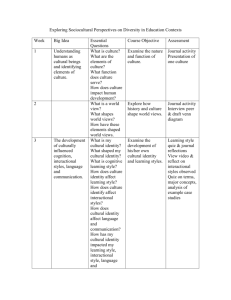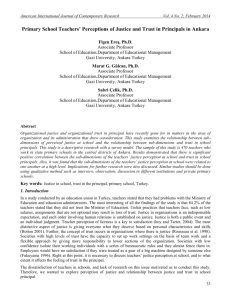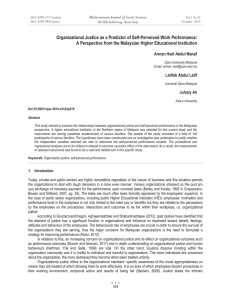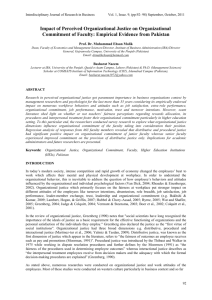CASE 14
advertisement
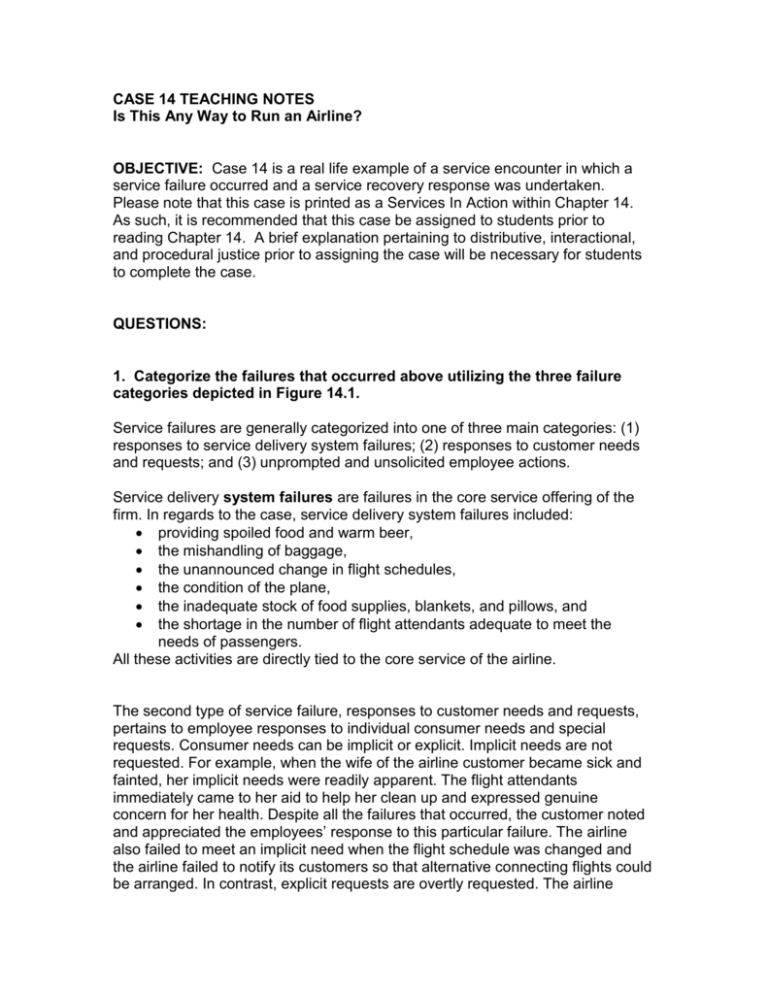
CASE 14 TEACHING NOTES Is This Any Way to Run an Airline? OBJECTIVE: Case 14 is a real life example of a service encounter in which a service failure occurred and a service recovery response was undertaken. Please note that this case is printed as a Services In Action within Chapter 14. As such, it is recommended that this case be assigned to students prior to reading Chapter 14. A brief explanation pertaining to distributive, interactional, and procedural justice prior to assigning the case will be necessary for students to complete the case. QUESTIONS: 1. Categorize the failures that occurred above utilizing the three failure categories depicted in Figure 14.1. Service failures are generally categorized into one of three main categories: (1) responses to service delivery system failures; (2) responses to customer needs and requests; and (3) unprompted and unsolicited employee actions. Service delivery system failures are failures in the core service offering of the firm. In regards to the case, service delivery system failures included: providing spoiled food and warm beer, the mishandling of baggage, the unannounced change in flight schedules, the condition of the plane, the inadequate stock of food supplies, blankets, and pillows, and the shortage in the number of flight attendants adequate to meet the needs of passengers. All these activities are directly tied to the core service of the airline. The second type of service failure, responses to customer needs and requests, pertains to employee responses to individual consumer needs and special requests. Consumer needs can be implicit or explicit. Implicit needs are not requested. For example, when the wife of the airline customer became sick and fainted, her implicit needs were readily apparent. The flight attendants immediately came to her aid to help her clean up and expressed genuine concern for her health. Despite all the failures that occurred, the customer noted and appreciated the employees’ response to this particular failure. The airline also failed to meet an implicit need when the flight schedule was changed and the airline failed to notify its customers so that alternative connecting flights could be arranged. In contrast, explicit requests are overtly requested. The airline employee in Charlotte who initially refused to provide the couple with vouchers for a night’s lodging failed to accommodate the passengers' explicit request. The third type of service failure, unprompted and unsolicited employee actions, pertains to events and employee behaviors-both good and bad-that are totally unexpected by the customer. These actions are not initiated by the customer via a request, nor are they part of the core delivery system. Subcategories in this group include (1) level of attention, (2) unusual action, (3) cultural norms, (4) gestalt, and (5) adverse condition. In regards to the case, the customer did not note unprompted or unsolicited employee actions as failures. 2. What is your assessment of the firm’s recovery efforts based on the concepts of distributive, procedural, and interactional justice? The customer’s perception of whether the recovery strategy is just includes evaluations of the recovery process itself; the outcomes connected to the recovery strategy; and the interpersonal behaviors enacted during the recovery process. Accordingly, perceived justice consists of three components: distributive justice procedural justice, and interactional justice. Distributive justice focuses on the specific outcome of the firm’s recovery effort. In other words, what specifically did the offending firm offer the customer to recover from the service failure, and did this outcome (output) offset the costs (inputs) of the service failure? In regards to the case, the distributive outcomes included $2,000 in cash, two first-class tickets, and a letter of apology. Students will differ in their opinions on whether the outcome offset the customer’s costs. The second component of perceived justice, procedural justice, examines the process that is undertaken to arrive at the final outcome. Hence, even though a customer may be satisfied with the type of recovery strategy offered, recovery evaluation may be poor due to the process endured to obtain the recovery outcome. In regards to the case, the company’s response took months to complete and requested that the customer seek out a notary to receive their money. Interactional justice refers to the manner in which the service recovery process is implemented and how recovery outcomes are presented. In other words, interactional justice involves the courtesy and politeness exhibited by personnel, empathy, effort observed in resolving the situation, and the firm’s willingness to provide an explanation why the situation occurred. In regards to the case, the interactional component is a mixed bag. For many, the letter of explanation accepts no blame and comes across as a form letter that has been “cut and pasted” from various other letters (e.g., the bad weather letter, the lost luggage letter, the dirty plane letter, etc.).




